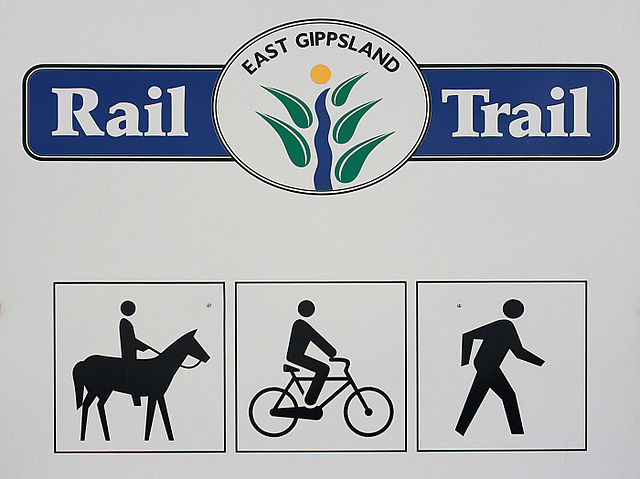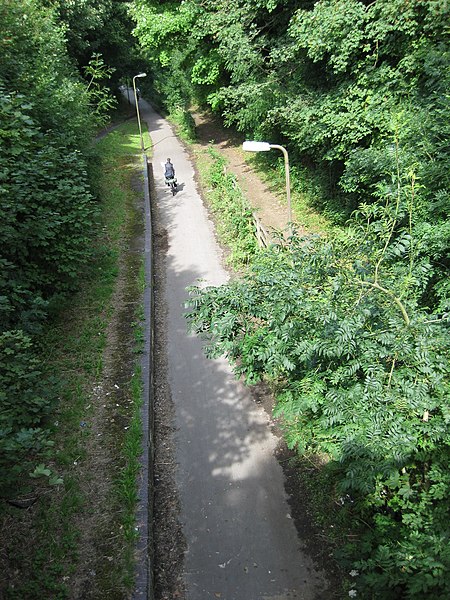A rail trail is a shared-use path on railway right of way. Rail trails are typically constructed after a railway has been abandoned and the track has been removed but may also share the right of way with active railways, light rail, or streetcars, or with disused track. As shared-use paths, rail trails are primarily for non-motorized traffic including pedestrians, bicycles, horseback riders, skaters, and cross-country skiers, although snowmobiles and ATVs may be allowed. The characteristics of abandoned railways—gentle grades, well-engineered rights of way and structures, and passage through historical areas—lend themselves to rail trails and account for their popularity. Many rail trails are long-distance trails, while some shorter rail trails are known as greenways or linear parks.
East Gippsland Rail Trail signage in Victoria, Australia, indicating the shared trail usage
Bill Thorpe Walking Bridge in Fredericton
A rail trail in southern Rhode Island
The "Nordbahntrasse" in Wuppertal, Germany
A shared-use path, mixed-use path or multi-use pathway is a path which is "designed to accommodate the movement of pedestrians and cyclists". Examples of shared-use paths include sidewalks designated as shared-use, bridleways and rail trails. A shared-use path typically has a surface that is asphalt, concrete or firmly packed crushed aggregate. Shared-use paths differ from cycle tracks and cycle paths in that shared-use paths are designed to include pedestrians even if the primary anticipated users are cyclists.
A shared-use path in Budapest, with a typical European shared use sign
Cyclists are often permitted to use rail trails and bridleways, such as this rail trail in Germany.
A segregated path in Birmingham, England. Note the tactile pavings to delianate the pedestrian and cyclist sections of the path.
Part of the Milton Keynes redway system runs along the disused track bed of the former Wolverton to Newport Pagnell Line, now a rail trail.








